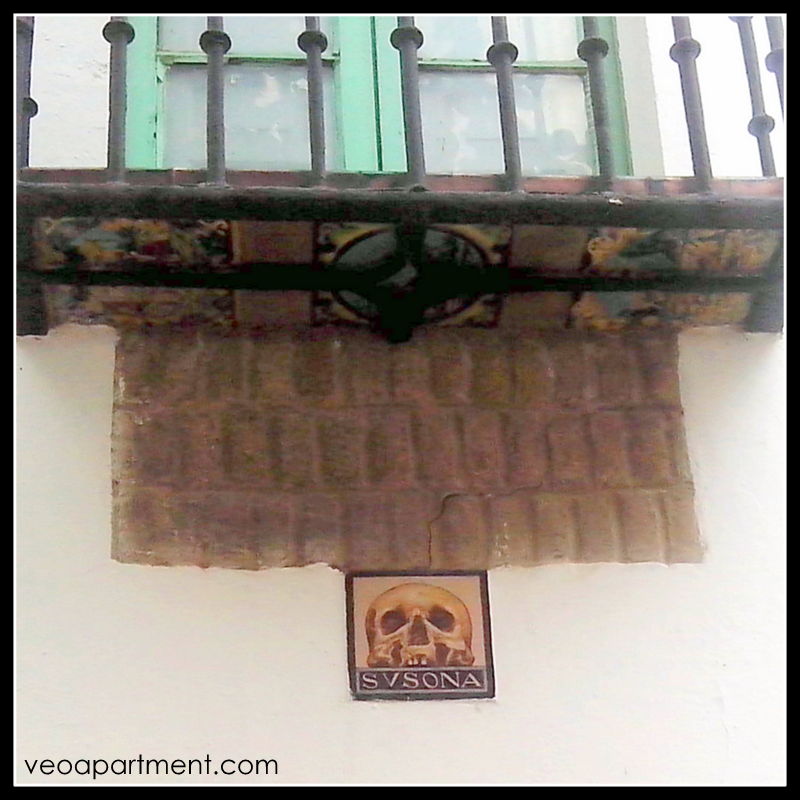One of the things that everybody wants to do when they come to Seville is to spend some time wandering through the Barrio Santa Cruz, the picture postcard neighbourhood of little squares and narrow streets behind the Cathedral, which in mediaeval times was the city’s Jewish quarter. And I don’t blame them; it’s certainly the prettiest part of the old city, full of interesting nooks and crannies with stories to be told, and charming little bars where you can sit and watch the world go by while enjoying your tapas and a glass of sherry.
But the Barrio has some grimmer secrets too. Tucked away in a little square between the Plaza Doña Elvira and Calle Agua (the street alongside the old wall), is the scene of one of Seville’s oldest popular stories, the legend of Susona Ben-Suson. For the eagle-eyed, or those being taken on a guided tour, the spot is marked by a tile on the wall bearing a picture of a skull, that marks the place where in times gone by hung the head of the beautiful Susona Ben-Suson, a silent witness to the tragedy that she had brought upon herself.

Our story takes place in the year 1480, in the final years of the Jewish community in Seville. By this time, as the newly-emerging kingdom of Spain sought to strengthen itself through enforced conformity to Catholicism, many Jews had already left or converted to Christianity, but suspicion among some Christians that these conversos were not true converts, and hoped to bring about a restoration Judaism, had recently led to the creation of the Spanish Inquisition, charged with rooting out heresy and religious dissent wherever it was to be found. Don Diego de Susona, a wealthy merchant, was one such converso, and alarmed by the threat to his position, he convened a secret meeting of prominent conversos to discuss the possibility of armed insurrection.
His daughter Susona, however, had a Christian boyfriend, a young noble, who she feared would be put in danger by an uprising, and she revealed the plot to him. Her boyfriend promptly reported them to the authorities, and the conspirators were duly arrested and brought before the Inquisition, tried and executed.
Stricken with remorse at the consequences of her action, Susona never again left her house, and when she died she had her head hung up outside the house (where it remained as late as the 18th century) as a testament to her grief and the duplicity of Christians.
Other places nearby with legendary or literary associations include the Plaza Doña Elvira (she was unsuccessfully wooed by Don Juan), and the old Tobacco Factory, now the University of Seville, which is the setting for Bizet’s opera “Carmen”.
For more information about the history of the Jews in Seville, visit the Centro de Interpretación de la Judería de Sevilla at calle Ximenez del Enciso 22.
If you want to stay somewhere close to these historic scenes, have a look at one of our apartments in Plaza Santa Cruz or Calle Mariscal.
Pingback: Seville | Barrio Santa Cruz | veoapartment
Pingback: Seville Ho! Ho! | Ian Watson
Pingback: Seville | The Jews and the Old Jewish Quarter | veoapartment
Pingback: Summer 2015: Road to Seville with ZeeGoes | Zee Goes
Pingback: Travel Spain: Road to Seville with ZeeGoes | ZeeGoes